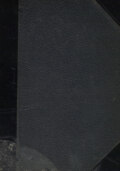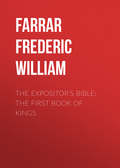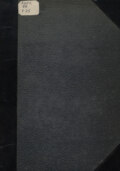
Farrar Frederic William
The Expositor's Bible: The Second Book of Kings
But the History of Prophecy also in this epoch is marked by events of world-wide importance. In the days of Isaiah we see the change of Israel from a nation into a church of the faithful, for which alone he has any permanent hope. In him, too, we hear the first distinct utterances of the final form in which should be fulfilled the Messianic hope. Under Jeremiah there was still further advance. He points, as Joel does, to the epoch of the gift of the Holy Spirit, and shows that God does not only deal with men as nations, or as churches, or even as families, but as beings with individual souls.
This and much besides we have seen in the foregoing pages, in which we have endeavoured to point the lessons of the Books of Kings. The one main lesson which the narrative is meant to teach is absolute faith and trust in God, as an anchor which holds amid the wildest storms of ruin, and of apparently final failure. Not until we have realised that truth can we hear the words of God, or see the vision of the Almighty. When we have learnt it, we shall not fear, though the hills be moved and carried into the midst of the sea. It is the lesson which gets behind the meaning of failure, and raises us to a height from which we can look down on prosperity as a thing which – except in fatally delusive semblance – cannot exist apart from righteousness and faith. This is the lesson of life, the lesson of lessons. If it does not solve all problems on their intellectual side, it scatters all perplexities in the spiritual sphere. It shows us that duty is the reward of duty, and that there can be no happiness save for those who have learnt that duty and blessedness are one. And thus even by this book of annals – annals of wild deeds and troubled times – we may be taught the truths which find their perfect illustration and proof in the life and teaching of the Son of God. When those truths are our real possession, the work of life is done. Then
"Vigour may fail the towering fantasy,
But yet the Will rolls onward, like a wheel
In even motion by the love impelled
That moves the sun in heaven and all the stars."
APPENDIX I
THE KINGS OF ASSYRIA, AND SOME OF THEIR INSCRIPTIONS
Dates from the Eponym Canon and the Assyrian Monuments; Schrader, Cuneiform Inscriptions, and the Old Testament, E. Tr., 1888, pp. 167-187.
b. c.
860. – Shalmaneser II.
854. – Battle of Karkar. War with Ahab and Benhadad.
842. – War with Hazael. Tribute of Jehu.
825. – Samsi-Ramman.917
812. – Ramman-Nirari.
783. – Shalmaneser III.
773. – Assur-dan III.
763. – June 15th. Eclipse of the sun.
755. – Assur-Nirari.
745. – Tiglath-Pileser II.
742. – Azariah (Uzziah) heads a league of nineteen Hamathite districts against Assyria (?).
740. – Death of Uzziah (?).
738. – Tribute of Menahem, Rezin, and Hiram.
734. – Expedition to Palestine against Pekah. Tribute of Ahaz.
732. – Capture of Damascus. Death of Rezin. First actual collision between Israel and Assyria.
728. – Hoshea refuses tribute.
727. – Shalmaneser IV.
724. – Siege of Samaria begun.
722. – Sargon. Fall of Samaria.
721. – Defeat of Merodach-Baladan.
720. – Battle of Raphia. Defeat of Sabaco, King of Egypt.
715. – Subjugated people deported to Samaria. Accession of
Hezekiah.
711. – Capture of Ashdod.
707. – Building of great palace of Dur-Sarrukin.
709. – Sargon expels Merodach-Baladan, and becomes King of
Babylon.
705. – Assassination (?) of Sargon.
705. – Sennacherib.
704. – Embassy of Merodach-Baladan to Hezekiah.
703. – Belibus made King of Babylon.
702. – Construction of the Bellino Cylinder.
721. – Siege of Ekron. Defeat of Egypt at Altaqu. Siege of
Jerusalem. Campaign against Hezekiah and Tirhakah disastrously concluded at Pelusium and Jerusalem.
681. – Murder of Sennacherib.
681. – Esar-haddon.
676. – Manasseh pays tribute.
668. – Assur-bani-pal (Sardanapalus).
608. – Death of Josiah in the battle of Megiddo against Pharaoh
Necho.
The dates and names of Assyrian kings as given in Records of the Past (ii. 207, 208) do not exactly accord with these in all cases.

INSCRIPTION OF SHALMANESER II. ON THE BLACK OBELISK IN THE BRITISH MUSEUM 918
It begins with an invocation to the gods Rimmon, Adar, Merodach, Nergal, Beltis, Istar, and proceeds: —
"I am Shalmaneser, the strong king, king of all the four Zones of the Sun, the marcher over the whole world, … who has laid his yoke upon all lands hostile to him, and has swept them like a whirlwind."
It tells of his campaigns against the Hittites etc., etc.
The allusion to Jehu runs as follows: —
"The tribute of Yahua, son of Khumri, silver, gold, bowls of gold, vessels of gold, goblets of gold, pitchers of gold, lead, sceptres for the king's hand, staves, I received."
This inscription is supplemented by another on a monolith found at Karkh, twenty miles from Diarbekr (Records, iii 81-100), which mentions the battle of Karkar, with its slaughter of fourteen thousand of the enemy, among whom was Sirlai —i. e., Ahab of Israel.
II
TIGLATH-PILESER II. (CIRC. B.C. 739)
In his Records he mentions no less than five Hebrew kings – Azariah, Jehoahaz (Ahaz), Menahem, Pekah, Hoshea – as well as Rezin of Damascus, Hiram of Tyre, etc. His name perhaps means "He who puts his trust in Adar." See Records of the Past, v. 45-52; Schrader, Keilinschr., pp. 149-151; G. Smith, Assyrian Discoveries, pp. 254-287.
Unfortunately the inscriptions are very mutilated and fragmentary.
III
Our chief knowledge of Sargon is from the great inscription in the Palace of Khorsabad. It is translated by Prof. Dr. Jules Oppert, Records of the Past, ix. 1-21. The king's inscription at Bavian, north-east of Mosul, is in the same volume, pp. 21-28, translated by Dr. T. G. Pinches. See, too, id., vii. 21-56, xi. 15-40.
The Khorsabad inscription has these passages: —
"The great gods have made me happy by the constancy of their affection; they have granted me the exercise of my sovereignty over all kings."
He says: —
"I besieged and occupied the town of Samaria; I took twenty-seven thousand two hundred and eighty of its inhabitants captive. I took from them fifty chariots, but left them the rest of their belongings. I placed my lieutenants over them; I renewed the obligations imposed upon them by one of the kings who preceded me." [Tiglath-Pileser, whom Sargon does not choose to name.]
"Hanun, King of Gaza, and Sabaco, Sultan of Egypt, allied themselves at Raphia to oppose me. I put them to flight. Sabaco fled, and no one has seen any trace of him since. I imposed a tribute on Pharaoh, King of Egypt."
He tells us that he defeated the usurper Ilubid of Hamath, who had been a smith; burnt Karkar; and flayed Ilubid alive.
He defeated Azuri and Jaman of Ashdod, and his most persistent enemy, Merodach-Baladan, son of Jakin, King of Chaldæa.
He ends with a prayer that Assur may bless him.
IV
Bellino's Cylinder comprises the first two years of Sennacherib. It is translated by Mr. H. F. Talbot, Records of the Past, i. 22-32. It was published by Layard in the first volume of British Museum Inscriptions, pl. 63. The facsimile of it was made by Bellino.
It begins: —
"Sennacherib, the great king, the powerful king, the king of Assyria, the king unrivalled, the pious monarch, the worshipper of the great gods, … the noble warrior, the valiant hero, the first of all kings, the great punisher of unbelievers who are breakers of the holy festivals.
"Assur, my lord, has given me an unrivalled monarchy. Over all princes he has raised triumphantly my arms.
"In the beginning of my reign I defeated Marduk-Baladan, King of Babylon, and his allies the Elamites, in the plains near the city of Kish. He fled alone; he got into the marshes full of reeds and rushes, and so saved his life."
(He proceeds to narrate the spoiling of Marduk's camp, and his palace in Babylon, and how he carried off his wife, his harem, his nobles.)
We see here an illustration of the vaunting tones of this king which are so faithfully reproduced in 2 Kings xviii.
His Bull Inscription, chiefly relating to his defeats of Merodach-Baladan, is translated by Rev. J. M. Rodwell (Records of the Past, vii. 57-64).
V
The Taylor Cylinder, so called from its former possessor, is a hexagonal clay prism found at Nineveh in 1830, and now in the British Museum (translated by Mr. H. F. Talbot, Records of the Past, i. 33-53).
The first two campaigns of Sennacherib are related as on the Bellino Cylinder. The Taylor Cylinder narrates campaigns of his first eight years.
The story of the third campaign narrates the defeat of Elulæus, King of Sidon; the tribute of Menahem, King of Samaria; the defeat of Zidka, King of Askelon; the revolt of Ekron, which deposed the Assyrian vassal Padi, and sent him in iron chains to Hezekiah; the battle of Egypt and Ethiopia at Altaqu (Eltekon, Josh. xv. 59), and the capture of Timnath. Of Hezekiah the king says: —
"And Hezekiah, King of Judah, who had not bowed down at my feet, forty-six of his strong cities, castles, and smaller towns, with warlike engines, I captured; 200,500 people, small and great, male and female, horses, sheep, etc., without number, I carried off. Himself I shut up like a bird in a cage inside Jerusalem. Siege-towers against him I constructed. I gave his plundered cities to the kings of Ashdod, Ekron, and Gaza. I diminished his kingdom; I augmented his tribute. The fearful splendour of my majesty had overwhelmed him. The horsemen, soldiers, etc., which he had collected for the fortification of Jerusalem his royal city, now carried tribute, thirty talents of gold, eight hundred of silver, scarlet, embroidered woven cloth, large precious stones, ivory couches and thrones, skins, precious woods; his daughters, his harem, his male and female slaves, unto Nineveh, my royal city, after me he sent; and to pay tribute he sent his envoy."
He then narrates his fourth, fifth, sixth, and seventh campaigns against Elam, etc. His eighth was against "the children of Babylon, wicked devils," etc. He ends by describing the splendour of the palace which he built.
VI
An inscription of Esar-haddon, found at Kouyunjik, now in the British Museum, mentions his receipt of the intelligence of his father's murder by his unnatural brothers, while he was commanding his fathers army on the northern confines.
"From my heart I made a vow. My liver was inflamed with rage. Immediately I wrote letters, saying I assumed the sovereignty of my Father's House." He prayed to the gods and goddesses; they encouraged him, and in spite of a great snowstorm he reached Nineveh, and defeated his brother, because Istar stood by his side and said to their army, "An unsparing deity am I" (Records of the Past, iii, 100-108).
VII
A terra-cotta cylinder of Assur-bani-pal (the Sardanapalus of the Greeks) is now in the British Museum. It is translated by Mr. G. Smith, Records of the Past, i. 55-106, ix. 37-64; Oppert, Mémoire sur les Rapports de l'Egypte et l'Assyrie; and G. Smith, Annals of Assur-bani-pal.
Its most interesting parts relate to the campaign of his father Esar-haddon against Egypt, and how Tirhakah, King of Egypt and Ethiopia, reoccupied Memphis. He defeated the army of Tirhakah, who, to save his life, fled from Memphis to Thebes. The Assyrians then took Thebes, and restored Necho's father, Psamatik I., to Memphis and Sais, and other Egyptian kings, friends of Assyria, who had fled before Tirhakah. The kings, however, proved ungrateful, and made a league against him. He therefore threw them into fetters, and had them brought to Nineveh, but subsequently released Necho with splendid presents. Tirhakah fled to Ethiopia, where he "went to his place of night" —i. e., died.
APPENDIX II
INSCRIPTION IN THE TUNNEL OF SILOAM
The inscription of Siloam is the oldest known Hebrew inscription. "It is engraved on the rocky wall of the subterranean channel which conveys the water of the Virgin's Spring at Jerusalem into the Pool of Siloam. In the summer of 1880 one of the native pupils of Dr. Schick, a German architect, was playing with other lads in the Pool, and while wading up the subterranean channel slipped and fell into the water. On rising to the surface he noticed, in spite of the darkness, what looked like letters on the rock which formed the southern wall of the channel. Dr. Schick visited the spot, and found that an ancient inscription, concealed for the most part by the water, actually existed there." The level of the water was lowered, but the inscription had been partly filled up with a deposit of lime, and the first intelligible copy was made by Professor Sayce in February 1881, and six weeks later by Dr. Guthe. Professor Sayce had to sit for hours in the mud and water, working under masonry or earth. There can be little doubt that this work is alluded to in 2 Kings xx. 20; 2 Chron. xxxii. 30; Isa. viii. 6 ("the waters of Shiloah ["the tunnel"?] which flow softly").
The alphabet is that used by the prophets before the exile, somewhat like that on the Moabite Stone, and on early Israelitish and Jewish seals. The language is pure Hebrew, with only one unknown word —zadah, in line three: perhaps "excess" or "obstacle."
Professor Sayce thinks that it proves that "the City of David" (Zion) must have been on the southern hill, the so-called Ophel. If so, the Valley of the Sons of Hinnom must be the rubbish-choked Tyropœon, under which must be the tombs of the kings, and the relics of the Temple and Palace destroyed by Nebuchadrezzar.
The inscription is: —
"The excavation! Now this is the history of the excavation. While the excavators were lifting up the pick each towards his neighbour, and while there were yet three cubits [to excavate], there was heard the voice of one man calling to his neighbour, for there was an excess in the rock on the right hand [and on the left?]. And after that on the day of excavating, the excavators had struck pick against pick, one against another, the water flowed from the spring [môtsâ, "exit," 2 Chron. xxxii. 30] to the Pool" (that of Siloam, which therefore was the only one which then existed) "for twelve hundred cubits. And [part] of a cubit was the height of the rock over the head of the excavators" (Sayce, Records of the Past, i. 169-175).
The letters are on an artificial tablet cut in the wall of rock, nineteen feet from where the subterranean conduit opens on the Pool of Siloam, and on the right-hand side. The conduit is at first sixteen feet high, but lessens in one place to no more than two feet. It is, according to Captain Conder, seventeen hundred and eight yards long, but not in a straight line, as there are two culs-de-sac, caused by faulty engineering. The engineers, beginning, as at Mount Cenis, from opposite ends, intended to meet in the middle, but failed. The floor has been rounded to allow the water to flow more easily. It is a splendid piece of engineering for that age.
The Pool of Siloam is at the south-east end of a hill which lies to the south of the Temple hill: the Virgin's Fountain is on the opposite side of the hill, more to the north, and is the only natural spring or "Gihon" near Jerusalem, so that its water was of supreme importance. Being outside the city wall, a conduit was necessary. Hezekiah "stopped all the fountains" (2 Chron. xxxii. 4) —i. e., concealed them. By providing a subterranean channel for them, he saved them from the enemy and secured the water-supply of the besieged city.
APPENDIX III
WAS THERE A GOLDEN CALF AT DAN?
The question might seem absurd, but for its solution I must refer to my paper on the subject in the Expositor for October 1893.
The sole authorities for a calf at Dan are 1 Kings xii. 28-30; 2 Kings x. 29. If in the former passage we alter one letter, and read האפד (the "ephod") for האחד (the "one") – as Klostermann suggests – we throw light on an obscure and perhaps corrupt passage. The allusion then would be to Micah's old idolatrous image (which may have been a calf) at Dan. The two words "and in Dan" in 2 Kings x. 29 may easily have been (as Klostermann thinks) an exegetical gloss added from the error of one letter in 1 Kings xii. 30.
Dan was a most unlikely place to select: for (1) It was a remote frontier town; and (2) there was no room, and no necessity there, for a new cultus beside the ancient one established some centuries earlier, and still served by priests who were direct lineal descendants of Moses (Judg. xviii. 30, 31).
This would further account for the absolute silence of prophets and historians about any golden calf at Dan; and it adds to the inherent probability, also supported by some evidence, that there were two cherubic calves at Bethel.
For further arguments I must refer to my paper.
APPENDIX IV
DATES OF THE KINGS OF ISRAEL AND JUDAH, AS GIVEN BY KITTEL AND OTHER MODERN CRITICS 919







